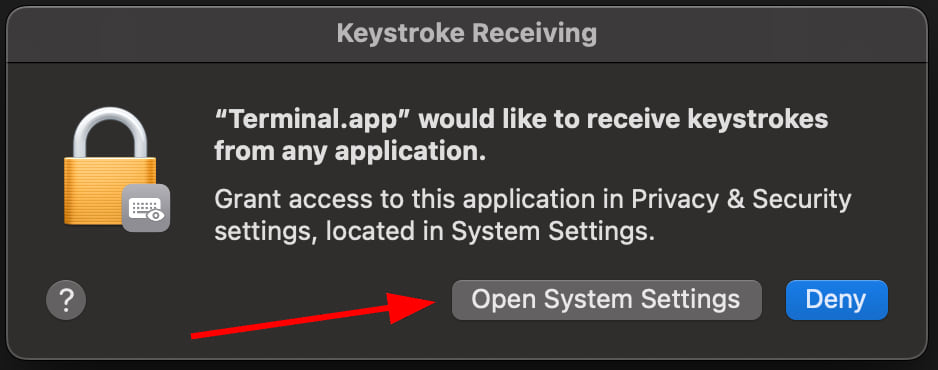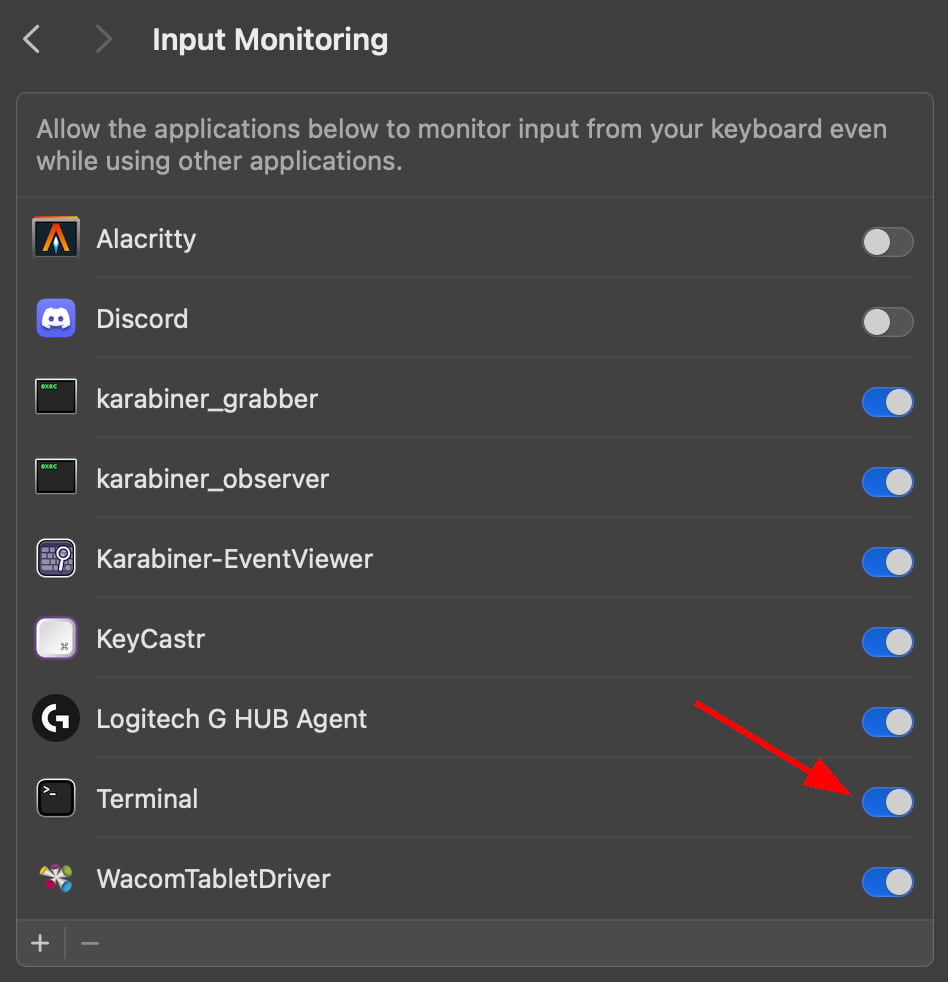9 releases (5 breaking)
| 0.6.0 | Apr 10, 2024 |
|---|---|
| 0.5.0 | Oct 18, 2023 |
| 0.4.0 | Oct 15, 2023 |
| 0.3.1 | Oct 10, 2023 |
| 0.1.0-alpha.0 | Sep 30, 2023 |
#2136 in Command line utilities
645KB
806 lines
daktilo ("typewriter" in Turkish, pronounced "duck-til-oh", derived from the Ancient Greek word δάκτυλος for "finger") is a small command-line program that plays typewriter sounds every time you press a key. It also offers the flexibility to customize keypress sounds to your liking. You can use the built-in sound presets to create an enjoyable typing experience, whether you're crafting emails or up to some prank on your boss.
✨ Inspiration: "Taking notes in class with my typewriter"
Now you can recreate this moment without the actual need for a physical typewriter!
Table of Contents
Getting Started
Simply run daktilo for the classic typewriter effect.
There are also different presets available:
| Preset Name | Description |
|---|---|
default |
the classic typewriter effect |
basic |
an alternative and more basic typewriter effect |
musicbox |
plays random notes like a music box |
ducktilo |
quack quack 🦆 |
drumkit |
dum, tss, cha! 🥁 |
spark |
high voltage high current typing experience ⚡ |
To list the presets:
daktilo --list-presets
To use a preset:
daktilo --preset musicbox
You can also use multiple presets at the same time:
# orchestra
daktilo -p default -p musicbox -p drumkit
To use a different output device:
daktilo --device pipewire
Also, you can use --list-devices to list the available output devices.
To variate the sounds and have a more realistic typewriter experience:
daktilo --variate-tempo 0.9,0.4 --variate-volume 0.1,0.5
Spoiler warning
There are easter eggs. If that is something you do not like you can disable them either via the config file option no_surprises = true or using the command-line flag:
daktilo --no-surprises
Supported Platforms
- Linux
- X11
- Wayland*
- Windows
- MacOS
Installation
Cargo
daktilo can be installed from crates.io using cargo if Rust is installed.
cargo install daktilo
The minimum supported Rust version is 1.70.0.
On Linux, the following packages should be installed:
- Arch Linux:
alsa-lib libxtst libxi - Alpine Linux:
alsa-lib-dev libxi-dev libxtst-dev - Debian/Ubuntu:
libasound2-dev libxi-dev libxtst-dev
Arch Linux
daktilo can be installed from the official repositories using pacman:
pacman -S daktilo
Alpine Linux
daktilo is available for Alpine Edge. It can be installed via apk after enabling the testing repository.
apk add daktilo
MacPorts
On macOS, daktilo can be installed via MacPorts:
sudo port install daktilo
More info here.
Binary releases
See the available binaries for different targets from the releases page.
Build from source
- Clone the repository.
git clone https://github.com/orhun/daktilo && cd daktilo/
- Build.
CARGO_TARGET_DIR=target cargo build --release
Binary will be located at target/release/daktilo.
Usage
daktilo [OPTIONS]
Options:
-v, --verbose Enables verbose logging [env: VERBOSE=]
-p, --preset [<PRESET>...] Sets the name of the sound preset to use [env: PRESET=]
-l, --list-presets Lists the available presets
--list-devices Lists the available output devices
-d, --device <DEVICE> Sets the device for playback [env: DAKTILO_DEVICE=]
-c, --config <PATH> Sets the configuration file [env: DAKTILO_CONFIG=]
-i, --init Writes the default configuration file
--variate-volume <PERCENT_UP[,PERCENT_DOWN]> Variate volume +/- in percent [env: DAKTILO_VOLUME=]
--variate-tempo <PERCENT_UP[,PERCENT_DOWN]> Variate tempo +/- in percent [env: DAKTILO_TEMPO=]
-h, --help Print help (see more with '--help')
-V, --version Print version
Configuration
daktilo can be configured with a configuration file using the TOML format.
The path of the configuration file can be specified via --config argument or DAKTILO_CONFIG environment variable.
It can also be placed in one of the following global locations:
<config_dir>/daktilo.toml<config_dir>/daktilo/daktilo.toml<config_dir>/daktilo/config
<config_dir> depends on the platform as shown in the following table:
| Platform | Value | Example |
|---|---|---|
| Linux | $XDG_CONFIG_HOME or $HOME/.config |
/home/orhun/.config |
| macOS | $HOME/Library/Application Support |
/Users/Orhun/Library/Application Support |
| Windows | {FOLDERID_RoamingAppData} |
C:\Users\Orhun\AppData\Roaming |
See daktilo.toml for the default configuration options.
You can also create the default configuration file in the current directory with --init flag:
daktilo --init
Adding custom presets
The configuration file consists of an array of sound_preset entries.
To define an array in TOML, you can create different sections as follows:
[[sound_preset]]
name = "custom"
key_config = []
[[sound_preset]]
name = "another_custom"
key_config = []
disabled_keys = []
variation = { volume: [0.1, 0.1], tempo: [0.05, 0.05] }
As shown above, sound_preset consists of 2 entries:
name: The name of the preset. It will be used in conjunction with--presetflag. e.g.--preset customkey_config: An array of key press/release events for assigning audio files to the specified keys. It can also be used to control the volume etc.disabled_keys: An array of keys that will not be used for playback.variation: Variate the sound on each event forkey_configs that do not specify variations*
Click for the list of available keys.
Alt, AltGr, Backspace, CapsLock, ControlLeft, ControlRight, Delete, DownArrow, End, Escape, F1, F10, F11, F12, F2, F3, F4, F5, F6, F7, F8, F9, Home, LeftArrow, MetaLeft, MetaRight, PageDown, PageUp, Return, RightArrow, ShiftLeft, ShiftRight, Space, Tab, UpArrow, PrintScreen, ScrollLock, Pause, NumLock, BackQuote, Num1, Num2, Num3, Num4, Num5, Num6, Num7, Num8, Num9, Num0, Minus, Equal, KeyQ, KeyW, KeyE, KeyR, KeyT, KeyY, KeyU, KeyI, KeyO, KeyP, LeftBracket, RightBracket, KeyA, KeyS, KeyD, KeyF, KeyG, KeyH, KeyJ, KeyK, KeyL, SemiColon, Quote, BackSlash, IntlBackslash, KeyZ, KeyX, KeyC, KeyV, KeyB, KeyN, KeyM, Comma, Dot, Slash, Insert, KpReturn, KpMinus, KpPlus, KpMultiply, KpDivide, Kp0, Kp1, Kp2, Kp3, Kp4, Kp5, Kp6, Kp7, Kp8, Kp9, KpDelete, Function, Unknown
As an example, here is how you can configure key_config:
key_config = [
{ event = "press", keys = "Return", files = [{ path = "ding.mp3", volume = 1.0 }] },
]
event: "press" or "release"keys: A regular expression (regex) for matching the keys.files: An array of files.path: The absolute path of the file. If the file is embedded in the binary (i.e. if it is insidesounds/directory) then it is the name of the file without full path.volume: The volume of the sound. The value 1.0 is the "normal" volume (unfiltered input). Any value other than 1.0 will multiply each sample by this value.
variation: Variate the sound on eachevent*
If you have defined multiple files for a key event, you can also specify a strategy for how to play them:
key_config = [
{ event = "press", keys = ".*", files = [{ path = "1.mp3" }, { path = "2.mp3" }], strategy = "random" },
]
Currently supported strategies are:
strategy = "random": pick a random file from the list and play it.strategy = "sequential": play the files sequentially.
Here is how you can combine everything together:
[[sound_preset]]
# Custom sound preset named "custom"
name = "custom"
# Key configurations for various events
key_config = [
# When a key starting with "Key" is pressed, play 1.mp3, 2.mp3, and 3.mp3 sequentially
{ event = "press", keys = "Key*", files = [
{ path = "1.mp3" },
{ path = "2.mp3" },
{ path = "3.mp3" },
], strategy = "sequential" },
# When a key starting with "Key" is released, play 4.mp3
{ event = "release", keys = "Key*", files = [
{ path = "4.mp3" },
] },
# When a key starting with "Num" is pressed, play num.mp3 at a very high volume (10.0)
{ event = "press", keys = "Num*", files = [
{ path = "num.mp3", volume = 10.0 },
] },
# When any key is pressed, play a random sound from cat.mp3, dog.mp3, or bird.mp3
{ event = "press", keys = ".*", files = [
{ path = "cat.mp3" },
{ path = "dog.mp3" },
{ path = "bird.mp3" },
], strategy = "random", variation = { volume: [0.1, 0.1], tempo: [0.05, 0.05] } },
]
# Disabled keys that won't trigger any sound events
disabled_keys = ["CapsLock", "NumLock"]
Sound Variation
To make the keyboard sounds more varied it is possible to variate both volume and playback speed (the later also varies the pitch).
Values are in percent, where the first value determines the maximum increase and the second the maximum decrease. The actual value is determined randomly on each keypress.
- If command line arguments or environment variables are set configurations made in the presets are overridden.
- Values need to be separated by a ",".
- If only one value is supplied it is used for both increase and decrease
- If a
key_configis set the preset values are overridden. - The configuration on a preset applies to all
key_config's that do not have any values set.
Similar Projects
bucklespring: Nostalgia bucklespring keyboard soundselectric-mode: Make your Emacs sound like a proper typewriter
MacOS permissions
On MacOS, you need to give some permissions to the terminal where you run daktilo.
The first time you run daktilo, you will probably see this popup:

If you see it, click on "Open System Settings", otherwise open "System Settings" manually and go to "Privacy and Security". From here, enable "Input Monitoring" for your terminal application:

Acknowledgements
Huge thanks to H. Arda Güler for giving me the idea for this project, sharing the inspiration behind it and implementing the first iteration in Python.
Kudos! 👾
Donations
If you find daktilo and/or other projects on my GitHub useful, consider supporting me on GitHub Sponsors or becoming a patron!
Contributing
See our Contribution Guide and please follow the Code of Conduct in all your interactions with the project.
Also, see how you can add new presets here.
License
Licensed under either of Apache License Version 2.0 or The MIT License at your option.
🦀 ノ( º _ º ノ) - respect crables!
Copyright
Copyright © 2023-2024, Orhun Parmaksız
Dependencies
~22–55MB
~862K SLoC

